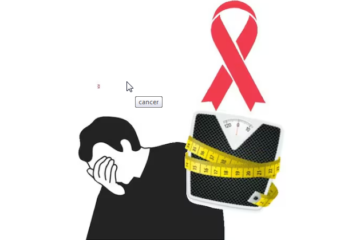Infants from bilingual homes learn faster: Study

Image taken from earth.com
Study suggests that infants who grow up in bilingual homes tend to learn new information faster.
As per the research on infant growth in bilingual homes, experts argue that bilingual homes help to create fast learners in comparison with those who grow up in a single language home. Reportedly, people have credited the “bilingual advantage” with providing a variety of “long-term cognitive benefits”. While, some scientific studies still question the advantages and if they exist at all, based on their research, the study authors have observed that bilingualism holds benefits in preverbal [infants] children.
Excessive blood fat may lead to organ damage
The researchers conclude as per their findings that living in a bilingual home helps children to develop a greater flexibility pertaining to learning and acquisition of new concepts, respectively. They argue that children are able to develop this “flexibility” even before they learn how to speak.
Moreover, the study from the Anglia Ruskin University (ARU) is based on the hypothesis that a complex linguistic environment found commonly in a bilingual home helps in prompting infants into developing the ability to switch attention more easily and quickly between the different stimuli.
Coronavirus: Can repurposed drugs treat infection?
According to study author, Dean D’Souza, experts propose that children be exposed to varies and less predicable environments to help infants progress more.
[bs-quote quote=”We propose that exposure to more varied, less predictable (language) environments drive infants to sample more by placing less weight on consolidating familiar information in order to orient sooner to (and explore) new stimuli.” style=”style-8″ align=”center” color=”#dd0000″ author_name=”Dean D’Souza” author_job=”Senior Lecturer in psychology at ARU”][/bs-quote]
D’Souza elaborated that since “babies can acquire multiple languages” easily, that the researchers wanted to “investigate” how it could be managed. D’Souza stated their research suggests that babies who grow up in bilingual home environments tend to adopt to a more complex environment as they seek out “additional information” on their own.
Study suggests ‘Chronic’ kidney cases on the rise
Moreover, the researchers analysed data from approximately 102 infants between the ages of seven to nine months, half of which belonged to bilingual homes. On the basis of that, the researchers inferred that a home can be considered to be “bilingual” [two languages] if the children are exposed to two or more languages on a daily basis and has heard their first language less than or equal to almost seventy-five percent. They considered the other group of infants as the controlled group which consisted of almost fifty-one children.
Irregular Sleep and Cardiovascular Disease: What’s the connection?
The researchers reportedly exposed the children to a series of pictures and observed their “target of attention” by the use of a Tobii Pro TX300 eye tracker and camera, which helped them to carry out the following experiments with each child, respectively:
- Switch task
- Visual memory task
- Representations task
- Gap overlap task
The first experiment helps to track the child’s “tendency to anticipate” the arrival of the next image and/or target. The idea being that he/she is able to anticipate the arrival of a new image based on a repeated pattern of images.
Coronavirus: What we need to know
The second experiment focuses on the child’s ability to spot “minute differences”. The idea being that he/she can discover the smaller differences between two images which helps to change their focus as a result.
The third experiment assesses the response of the child. The idea being to notice how he/she responds to the less detailed and/or minute differences, respectively.
The fourth experiment helps the researchers to measure the child’s ability to let go of a stimulus and move on to the next. The idea being to notice the diversion of attention from one object/person to another.
Study suggests links between diet and anxiety disorders
Based on the above experiments, the study authors were able to ascertain that infants from bilingual homes were able to switch their focus more often in comparison to the controlled group [the non-bilinguals]. They argued that the home environment helped the first group to be more “adept” at handling the changing stimuli so easily. Moreover, they found that the children belonging to bilingual homes were “significantly faster” at moving one between images as well as focusing on the newer image(s).
[bs-quote quote=”Is mere exposure to bilingual environments enough? We suggest that it is, because the infants had not yet begun to speak, it tells us that mere exposure to a second language is sufficient to observe a difference.” style=”style-8″ align=”center” color=”#dd0000″ author_name=”Dean D’Souza” author_job=”Senior Lecturer in psychology at ARU”][/bs-quote]
D’Souza argues that bilingual environments “may be more variable and unpredictable than monolingual environments” thereby, they are inevitably “more challenging to learn in”. He adds that being able to scan their “surroundings faster and more frequently” also helps them in multiple ways. D’Souza presents the example that “redirecting attention” of the child from “a toy to a speaker’s mouth could help infants to match ambiguous speech sounds with mouth movements”.
IWD 2020: Veena Malik criticizes Mahira Khan
Therefore, they stress that being able to be an adaptive response to a specific environment is an advantage of being a bilingual. Moreover, they add that certain studies suggest growing up as a bilingual in a bilingual home may also help to delay the development of Alzheimer’s disease and/or dementia in the older age.
Saudi Revolt: Oil prices crash amid clashes in the Royal family
Stay tuned to Baaghi TV for more updates.










